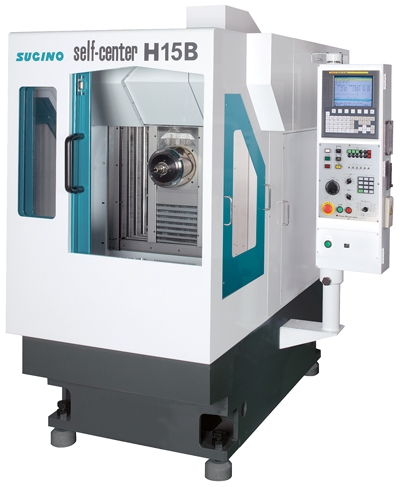
Sugino Corp. introduces its Self-Center H15 and H15B horizontal machining centers. These machines are for milling, drilling, tapping and boring of small to medium-size parts in aluminum, cast iron and carbon steel, such as brake, engine and transmission components. The H15 and H15B feature BT30 high-pressure, coolant-through spindles with maximum speeds up to 15,000 RPM and 20,000 RPM, respectively.
Specifically designed for saving space and energy, the H15 sits within a compact 4.5' x 9' (1375mm x 2750mm) footprint, while the H15B is even more compact with a 3.5' x 9' (1020mm x 2690mm) footprint, using up to 25 percent less space and energy.
Additionally, these horizontal machining centers provide a work area of 11.81" x 13.78" x 13.78" (300mm x 350mm x 350mm), accommodating a weight up to 770 lbs. (350kg) for the H15, and a work area of 7.87" x 7.87" x 7.87" (200mm x 200mm x 200mm), accommodating a weight up to 1100 lbs. (500kg) for the H15B.
Contact Details
Related Glossary Terms
- boring
boring
Enlarging a hole that already has been drilled or cored. Generally, it is an operation of truing the previously drilled hole with a single-point, lathe-type tool. Boring is essentially internal turning, in that usually a single-point cutting tool forms the internal shape. Some tools are available with two cutting edges to balance cutting forces.
- centers
centers
Cone-shaped pins that support a workpiece by one or two ends during machining. The centers fit into holes drilled in the workpiece ends. Centers that turn with the workpiece are called “live” centers; those that do not are called “dead” centers.
- gang cutting ( milling)
gang cutting ( milling)
Machining with several cutters mounted on a single arbor, generally for simultaneous cutting.
- milling
milling
Machining operation in which metal or other material is removed by applying power to a rotating cutter. In vertical milling, the cutting tool is mounted vertically on the spindle. In horizontal milling, the cutting tool is mounted horizontally, either directly on the spindle or on an arbor. Horizontal milling is further broken down into conventional milling, where the cutter rotates opposite the direction of feed, or “up” into the workpiece; and climb milling, where the cutter rotates in the direction of feed, or “down” into the workpiece. Milling operations include plane or surface milling, endmilling, facemilling, angle milling, form milling and profiling.
- tapping
tapping
Machining operation in which a tap, with teeth on its periphery, cuts internal threads in a predrilled hole having a smaller diameter than the tap diameter. Threads are formed by a combined rotary and axial-relative motion between tap and workpiece. See tap.






